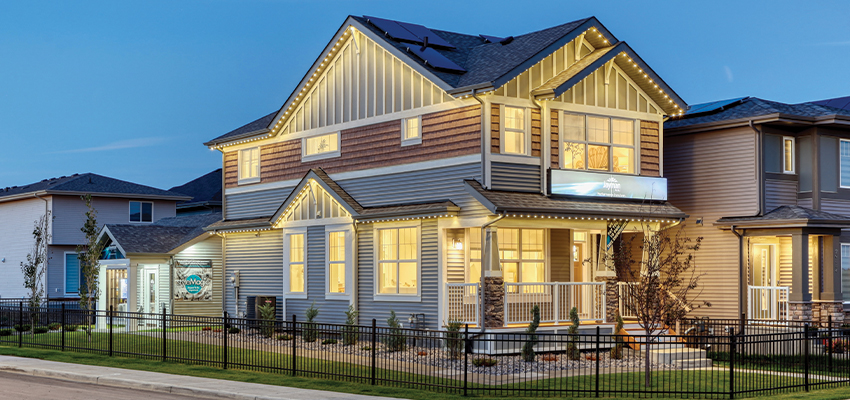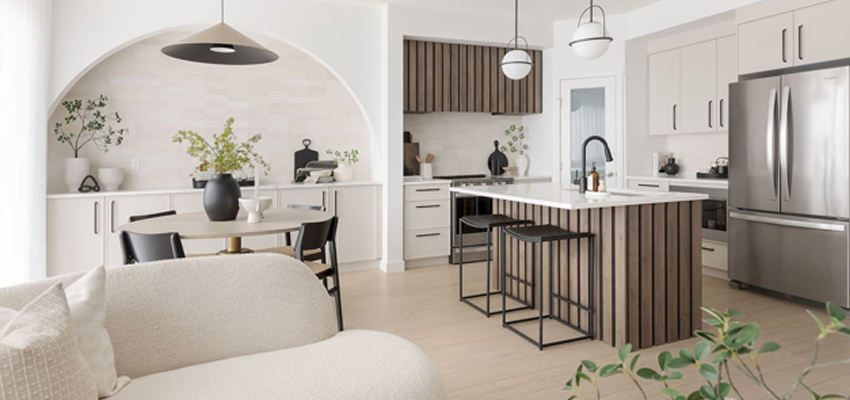Smart Strategies for Budget-Friendly Home Buying
A new home represents a blank slate that you can personalize to suit your lifestyle. It’s a practical choice to start building equity in something tangible. It’s also a major financial investment that will require thoughtful planning and careful budgeting.
As you’re planning the purchase of a new home, here are some tips to help you understand the costs and keep your budget in check.
Wait Until You’re Ready
Browsing real estate listings and exploring Showhomes can be exciting, but it’s important to take your time and make thoughtful decisions. Tour a variety of homes to get a clear idea of what you really want. Research different communities and consider all the factors, such as commuting distance, traffic, proximity to schools, and resale value. Collecting this background information will give you greater confidence when you make a decision.
Taking your time before a home purchase also allows you to save more money for your down payment. Five percent is the minimum, but any amount less than 20 percent will require you to pay default mortgage insurance, which will slightly increase your monthly payment. If you can put at least 20 percent down, you’ll avoid that extra cost and have a smaller mortgage, which means lower monthly payments.
Improve Your Credit Score
A strong credit score means lower interest rates, so you’ll want to take care of your credit rating in the months leading up to your purchase. Always pay your bills on time and reduce your debt as much as possible. Even a small increase in your credit score can put you into a better financing tier for your mortgage, and a small decrease in percentage points can save you tens of thousands of dollars by the time you pay off the mortgage.
Crunch The Numbers
It can be challenging to estimate your monthly payment, as there are many variables involved. For example, the cost of the home, your down payment, your mortgage interest rate, and property taxes can all affect the calculations.
Get a mortgage pre-approval so that you have some solid numbers when it comes to interest rates. Do an online search for a mortgage calculator, a web-based tool offered by many banks. Input as much information as possible to give you a sense of your monthly payment amount.
Expect the Unexpected
You’re likely aware of the typical costs associated with buying a home: the down payment, the mortgage, property taxes, and homeowner’s insurance. However, there are other expenses that are likely to pop up, such as legal fees, home inspection charges, and moving services. By planning for all potential costs up front, you can stay within your budget and avoid any financial surprises.
Shop Around
If you have your eye on a certain area of the city, research the various Home Builders in the area. Request quotes for similar homes with comparable features. Ask the Home Builders if they offer any discounts, such as incentives to use their preferred lenders or a promotion for free upgrades.
Similarly, shop around to find the best mortgage rate. Consult a mortgage broker or independently request quotes from several different companies to confirm that you’re getting the best deal.
Choose The Right Size and Style of Home
The size of a new home plays the biggest role in determining its cost. If you’re worried about making your payments, a sensible approach is to purchase a smaller home. A single-storey 1,300 square foot home is going to be much more affordable than a two-storey 3,000 square foot home with a finished basement.
Single Family homes are very popular, but there are more affordable options as well. Townhomes and Duplexes are great choices for those looking to maximize value. A Duplex has two separate homes within a single structure, while Townhomes have multiple units built in a row. These Home Styles are popular with first-time buyers and young families. In the future, you can use the equity in your first home to upgrade to a larger space.
Be Realistic
As you tour a Showhome, remember that these homes may feature upgraded finishes and fixtures that will increase the cost of the home. Ask about the base price, which is the cost of building a home with that floor plan using standard materials. Then, compare the base price to the actual price of the Showhome you’re viewing.
The smartest choice is to start with a home that has a base price below your budget. This will give you some flexibility to select the upgrades that are most important to you. As you’re contemplating upgrades and add-ons, remember that certain materials and finishes (such as quartz countertops and hardwood floors) are more expensive.
Use Your Existing Furniture
When moving into a new home, it’s tempting to want to start fresh with new furniture. However, your best strategy for the moment is to invest your money into the home purchase, and pick out new furnishings later. You’ll have more time (and budget) in the years ahead to customize the colours and contents of each room.
The same mentality applies to other enhancements like a finished basement, landscaping, and a backyard deck. Make the choices that are affordable for you now and start a list of possible ideas for the future. As you spend more time in the home, these ideas will likely evolve to suit your needs.
The good news is, you can buy a new home at a price you can afford. By taking the time to understand the process and prepare yourself for this big purchase, you’ll be able to successfully become a full-fledged homeowner.



